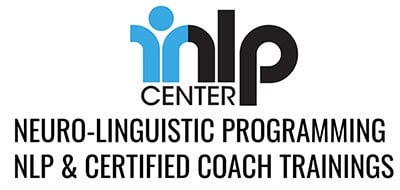Group coaching prices depends on many factors—niche, location, audience, and much more. In this guide, you’ll discover a simple framework for determining how to price your group coaching sessions. You’ll also learn how to avoid common pricing mistakes and add group coaching to your current coaching services.
Let’s jump right in.
How Much Should You Charge for Group Coaching?
Let’s find out how much you should charge for group coaching.
The best approach is to start with your current one-on-one coaching rate. Here is a simple formula to estimate your group coaching prices relative to your individual coaching fees:
Group Coaching Rate (per session per person) =
One-on-One Coaching Rate x 2 / Ideal Group Size * Enrollment RateLet’s break it down.
You start with your one-on-one coaching fee, say $200. Group sessions reach more people. And, the dynamic and support of the group setting add extra value. So you need to charge more. Let’s double your rate. Your revenue goal for each group session becomes $400.
Next, consider the size of your group. Your group coaching training should help with choosing the ideal group size for you. It often depends on your style, methods, and the outcomes your clients want.
Let’s say five clients is the target size. Divide $400 by 5, and it’s $80 each per session. But, you need to consider the chance of not all spots getting filled.
Assuming an 80% fill rate means expecting four attendees, not five. So, divide $400 by 4 and you land on a rate of $100 per client per session.
Notice clients pay half of the individual session rate, while you earn over twice as much per hour. Win-win.

Considerations for Setting Group Coaching Prices
Group Size: Avoid Crowding Groups
Adding more people means you make more money per session. But past a certain threshold, more people also means less value for your clients. In a large group, it’s hard for people to feel comfortable and engaged. You most likely won’t have the same impact on a group of five people that you would on a group of twelve.
Format: Open Groups vs Cohorts
There are different types of groups. Each begs for a different pricing strategy. Some groups are ‘open’, meaning people come and go as they wish. They pay per session or a fixed membership fee that gives them access to your sessions whenever they please.
Another format is the ‘cohort’. A cohort involves working with the same group of people for a set amount of time. With this model, you can choose to charge people upfront or monthly. It offers a more predictable revenue stream. And because clients commit for several months at a time, you’re not constantly having to find new clients.
Related: How to Structure a Group Coaching Program
Individual Coaching Rate: A Good Place to Start
Instead of making a group coaching rate out of thin air, start with your one-on-one coaching rate. This rate should already include your specialty, experience, location, and income goals. No need to start from scratch. Just use the formula above.
Marketing Costs: Mind the Cost of Filling Up Groups
Your rate isn’t just for coaching hours. It covers time spent on marketing, management, and emails. Group coaching means drawing in more clients. And your marketing efforts might have to increase, depending on the channels you use. Consider the time you’ll need to spend finding leads, vetting prospects, and making sales.
Session Length: Account for Extra Time
Group sessions often last longer than one-on-one meetings, which clients usually see as a benefit. You may want to consider adding 50% more time to your pricing.
Additional Services: Raise Your Value to Raise Your Prices
You can add additional services like videos, private group access, and exclusive content to your coaching packages. These extras enrich the experience of your clients and allow you to charge higher fees.
6 Common Pricing Mistakes to Avoid
1. Neglecting TIme Outside Sessions
Coaches often skip counting marketing, planning, and chatting in their prices. This leads to undercharging. It’s vital to factor in all work hours, not just session time.
2. Underpricing
Low prices can make your coaching seem low-value. They can also quickly overwhelm you in demand. Prices should match the service’s worth. Setting fair rates ensures a balance between demand and quality. It will also help you filter out uncommitted clients.
3. Underestimating the Power of Group Dynamics
The value of group interactions is often missed in pricing. The additional support and accountability people get justifies higher fees. The risk is to underestimate the impact group coaching can have.
4. Not Communicating Value Effectively
Failing to communicate the benefits of your group will make it hard for you to get clients. Help prospects see why your service is worth their investment. People don’t buy “coaching”. They buy benefits and outcomes. Help them see how your groups can help them solve their problems.
5. Asking Clients to Take on Too Much Risk
First-time buyers need reassurance that their purchase will be worthwhile. Group coaching is a significant investment. And, while we don’t recommend coaches guarantee specific outcomes (since coaching results vary greatly between individuals), there are ways to make the buying process less risky for your customers. Consider offering a money-back guarantee, trial sessions, or flexible packages.
6. Targeting the Wrong Audience
Setting prices without considering who your ideal clients are can lead to mismatched expectations. For example, you might attract people who cannot afford your services. It’s important to price your coaching to match what your ideal clients are willing to spend and to target the right audience in your marketing. This approach helps you attract clients who are ready and able to invest in your coaching.
Conclusion: Is Group Coaching Lucrative?
So, how lucrative is group coaching?
It’s rare for coaches to offer group coaching only. Per hour, group coaching is more lucrative than individual coaching. But you need more clients per ‘coaching hour’ to sustain your income.
So if you’re good at attracting and selling clients and you are confident in your ability to fill up groups, then group coaching can be a very lucrative avenue.
The more common option is to offer group coaching alongside your one-on-one coaching practice. It is the best strategy for most people.
It allows you to generate more income and also serves as a fantastic marketing and sales tool.
That’s right. If your groups are effective, a percentage of your group clients will eventually want to ‘upgrade’ to individual coaching. And as demand increases, you will be able to start increasing prices for individual coaching as well.
It’s a beautiful synergy that will allow you to scale your coaching business.




